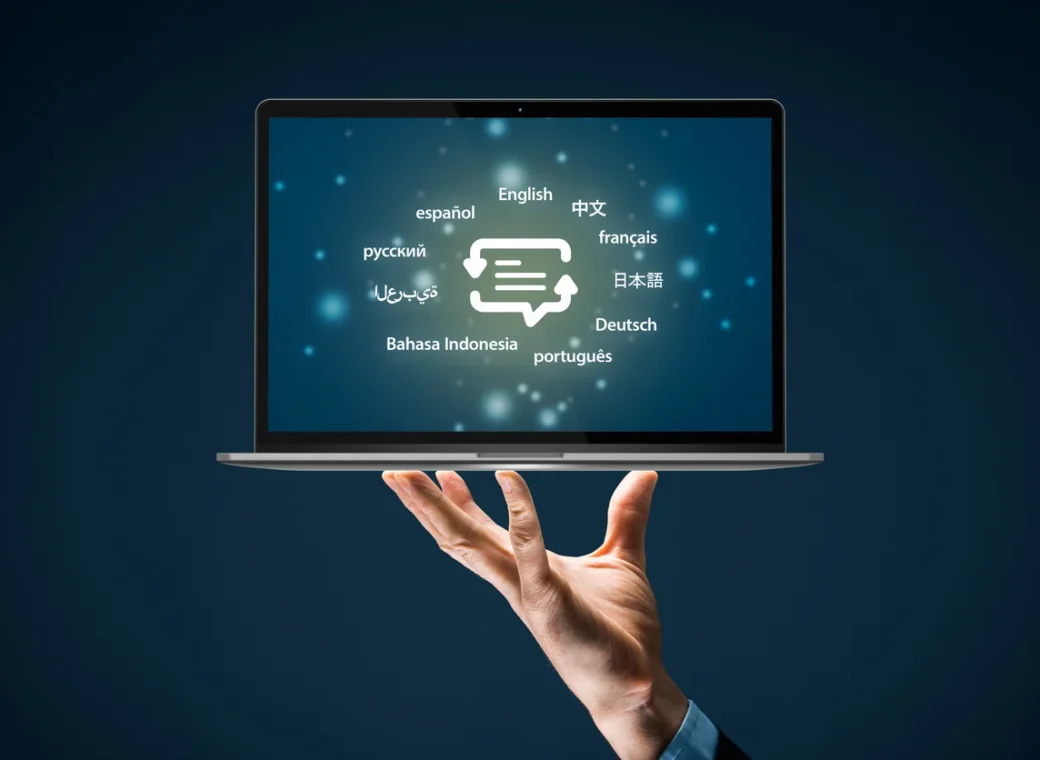Machine translation (MT) has transformed communication across language barriers, offering rapid and efficient linguistic conversions. The technology itself is inherently secure as software maps words from one language to another without human involvement. However, the broader context of its use introduces several security and compliance considerations. For example, where the translated data is stored, who has access to the data before and after translation, and human involvement in translation workflows create security risks that must be addressed. It’s crucial for organizations, especially those handling sensitive information in sectors like healthcare, government, finance, and legal, to navigate these risks with strategic vigilance.
This article outlines ten essential checks to ensure your machine translation usage remains secure and compliant without impacting efficiency. By adhering to these guidelines, organizations can harness the power of machine translation confidently while safeguarding their data’s integrity and privacy.
Check 1 – Machine translation software provider’s reputation
Carefully evaluate the reputation of your machine translation (MT) software provider and make sure they understand your compliance requirements. For instance, organizations aiming to comply with European market standards must obtain the CE Mark for their products. They must find an MT provider who understands and meets the standards for translating critical documents such as product labels and instructions for use, which are essential for the CE Mark. Similarly, for companies in the financial sector, the MT provider must be familiar with regulations such as Sarbanes-Oxley, Basel III, or Solvency II.
Check 2 – Private machine translation deployment
Installing your machine translation systems on private cloud infrastructure can significantly enhance security. Private cloud infrastructure is hardware your organization controls—it may be purchased and self-managed by your organization or set up in the public cloud. In either case, you have total control and security over who can access your data both before and after translation.
Check 3 – Document encryption
Encryption technologies scramble data so only authorized users can access it with the correct encryption key or password. Ensure all document storage is password protected, and documents are shared over secure communication channels. Remember to manage passwords carefully; only authorized personnel should access them, and you must rotate them regularly to minimize the risk of compromise.
Check 4 – Multifactor authentication
Multifactor authentication (MFA) requires users to provide two or more verification factors to access the MT tools. This can include something the user knows (like a password), something the user has (such as a mobile device for receiving a token), or something the user is (utilizing biometric verification). Integrate MFA into your machine translation systems to add an extra layer of security. Train your staff to use MFA, and ensure that it’s a mandatory step in the login process for all users accessing the MT system.
Check 5 – Logging and auditing
Implement comprehensive logging and auditing capabilities within your machine translation tools. For instance, keep detailed records of when translations are performed, who initiates them, and what data is being processed. Regular audits, either conducted internally or by third-party security firms, can help identify any unusual activities or security gaps. You can trace any issues to their source and ensure accountability within your MT processes.
Check 6 – ISO-certified translation workflows
Once your software integrations are secure, it is time to focus on operations. Aim to establish ISO-certified workflows relevant to translation services, such as ISO 17100. Consider consulting with an expert who can support you in adapting your workflow to meet these standards. Even if you do not apply for the actual certificate, ISO-compliant workflows automatically include rigorous data handling and confidentiality protocols, Use a ISO 27001 certified company.
Check 7 – Contracts for translators doing pre-and post-editing
MT workflows typically require human handling of confidential documents for pre and post-editing. Your translators should work under contracts and non-disclosure agreements(NDAs) that clearly outline data handling responsibilities and compliance with security protocols. Ensure that translators agree to use the data only for the project and know the legal implications of breaching confidentiality. Contracts protect your organization and provide clarity and trust in your working relationships with external translators.
Check 8 – Set translation standards and policies
Implement strict policies that require the use of company-approved MT solutions and make it clear that all translations of sensitive information must adhere to these tools. Educate your employees about the risks of ‘shadow IT,’ where individuals use unauthorized software(such as free online MT software) that could lead to data breaches. Also, continuously assess and update your MT workflows and policies to address emerging security challenges and incorporate best practices.
Check 9 – Set BYOD and remote work policies for translation
Develop guidelines that dictate how personal devices should be used when accessing MT resources. You will then ensure these devices are equipped with appropriate security software and encryption. Remote work policies should require secure connections, like VPNs, to access the MT system. All translation work must be conducted on secure, password-protected networks. Ensure that staff are aware of the protocols for securely handling data when using MT tools outside the office environment.
Check 10 – Continuous training and improvement
You have to regularly update your team on the latest security practices and compliance requirements. You may create an ongoing training program that includes the newest threats, like phishing or social engineering. These could indeed compromise your MT system. Encourage a culture of security awareness, where employees are rewarded and supported for reporting suspicious activities.
Conclusion
The ten checks listed above require a proactive approach but ensure that your organization stays ahead in governing your translation processes. SYSTRAN delivers a fully integrated solution with your IT infrastructure that makes it easier to check these boxes off your list. It’s a straightforward way to bring your machine translation up to speed with industry standards. It helps you stay secure, compliant, and competitive.






